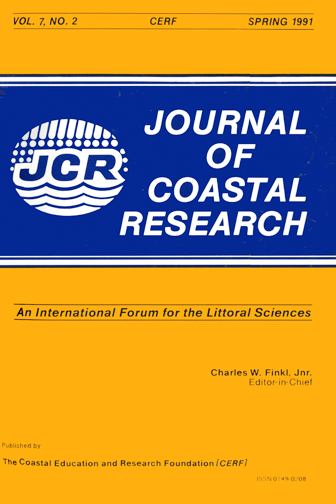The Macroinvertebrate Fauna Associated with the Mud Flats of the Gulf of Maine
Keywords:
Gulf of Maine, intertidal studies, fine-grained flats, mud flats, macroinvertebrate faunaAbstract
Mud flats are a dominant habitat in the Gulf of Maine and are of significant economic and ecological importance to the region. This communication describes the macroinvertebrate fauna (> 1.0 mm) of five representative mud flats along 300 km of coastline in the central and northern Gulf of Maine. Arthropods and annelids were the most diverse taxa encountered, but annelids and molluscs were the numerical dominants. Numbers of species at each site ranged from 19 to 43. Density ranged from 624 to over 52,000 individuals m -2 with an overall mean of 7,345 m -2. Numerical analyses showed that the mud flats of the Gulf of Maine are numerically dominated by a few widely distributed, deposit-feeding species. This is in contrast to previous results of sand flat and sand beach investigations which manifested faunistic heterogeneity and distinct community partitioning, respectively, over the same geographical range. The most characteristic mud flat taxa include oligochaetes, the molluscs Hydrobia truncata and Macoma balthica, the polychaetes Streblospio benedicti and Nereis virens and the amphipod Corophium volutator. With the exception of S. benedicti, these species are characteristic of similar environments in northwestern Europe and, with the exception of C. volutator which has a very limited distribution in the western hemisphere, they are also widely distributed in the northwest Atlantic.


